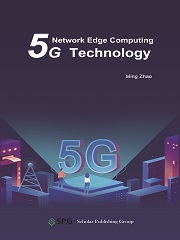
© 2020
5G Network Edge Computing Technology
Measurement, Epistemic Injustices, Activism
Editors: Valentin Beck
eBook ISBN: 978-1-80053-991-4
Hardcover ISBN: 978-1-80053-991-2
DOI: 10.23977/afshn.2020.030101
Edition Number: 1
Number of Pages: VIII, 400
Publisher: Springer International Publishing
Price: $34.90
Introduction
In recent years, with the rapid development of mobile wireless communications and social networks, 5G has emerged to meet the needs of a wide range of applications such as ultra-high service throughput, ultra-high connection density, ultra-high mobile speed, and ultra-reliability and low latency. Human life and work are gradually migrating to 5G networks, and global mobile data traffic has exploded. 5G network is an inevitable trend in the development of mobile communications. The vision of 5G network is to provide ultra-high speed, ultra-low latency, expand base station capacity in many ways, and significantly improve the quality of service perceived by users. Among them, the network edge computing technology is known as a powerful technology that supports 5G connections. Using 5G network edge computing technology, people, things, data, applications, transportation systems and cities can be brought together in an intelligent networked communication environment.
Tabale of Contents
Download Full Text
In recent years, with the rapid development of mobile wireless communications and social networks, 5G has emerged to meet the needs of a wide range of applications such as ultra-high service throughput, ultra-high connection density, ultra-high mobile speed, and ultra-reliability and low latency.
About the authors